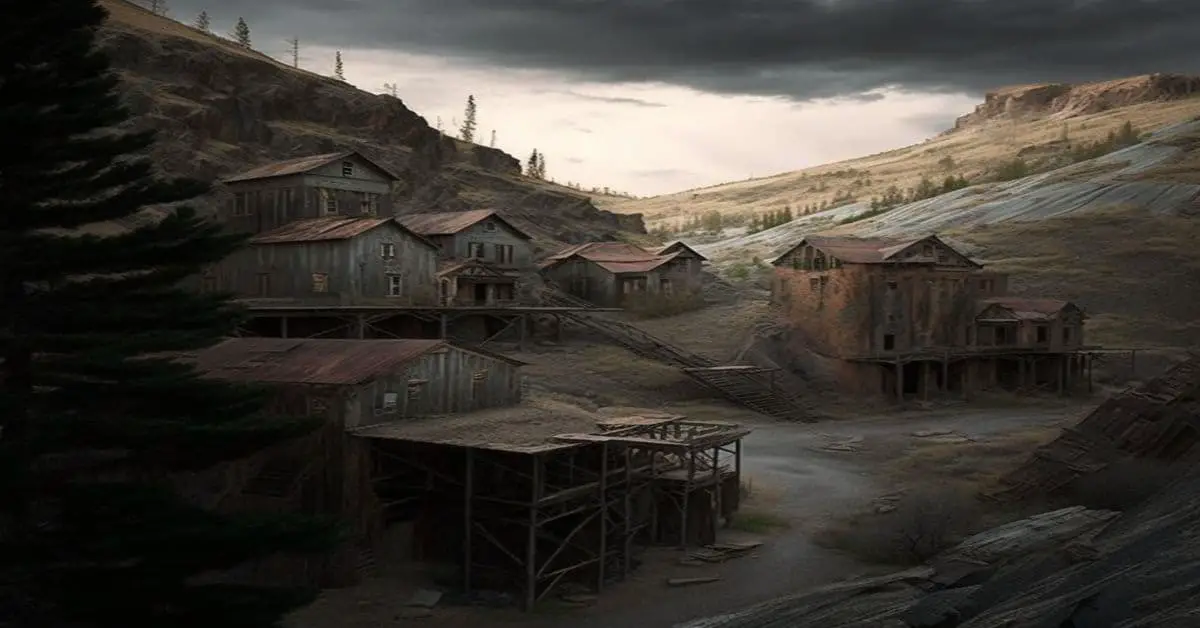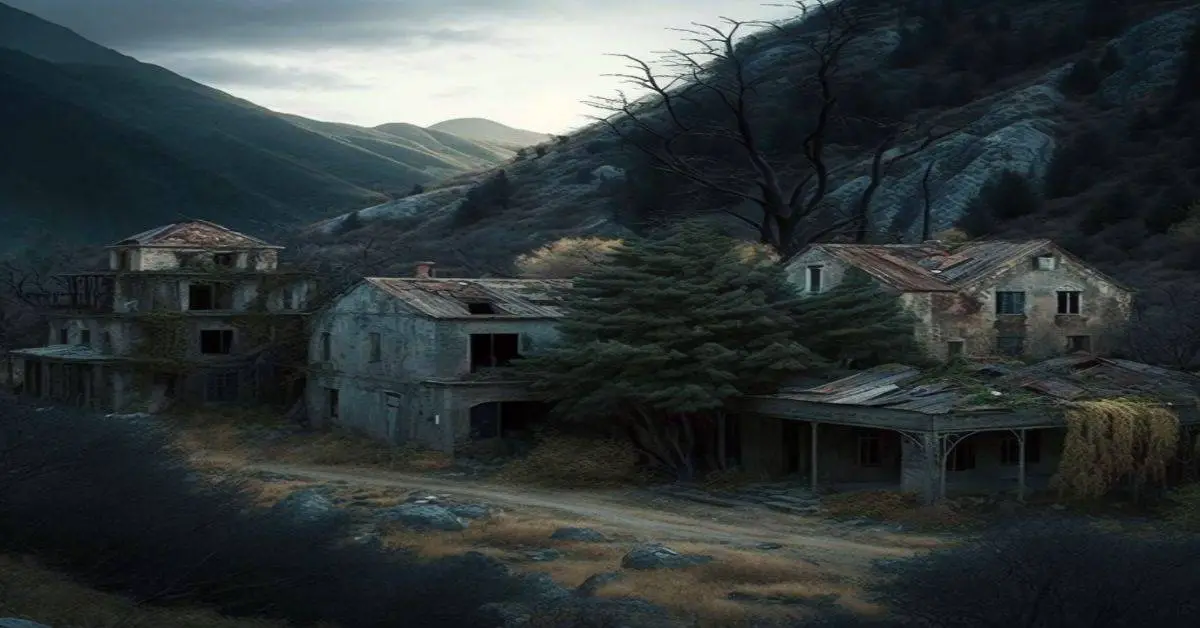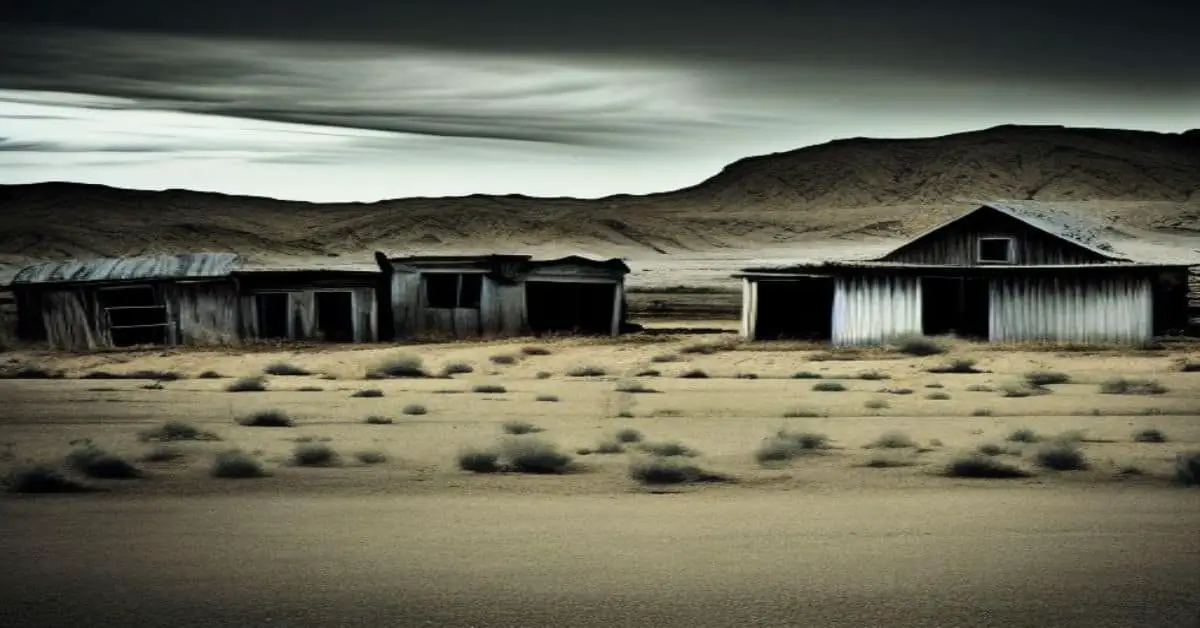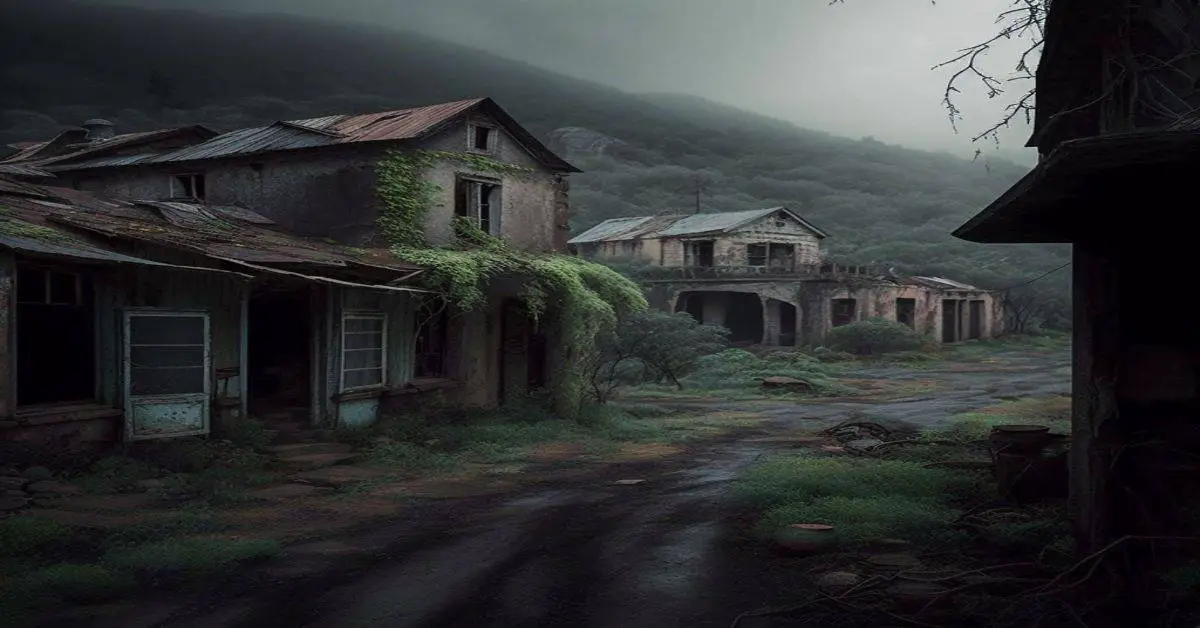Are you ready for a spooky adventure? Look no further than Illinois ghost towns! From still-inhabited Prohibition-era towns to creepy, flood-ravaged trading hubs, you’re sure to find your perfect haunt.
Why Illinois Ghost Towns are Unique
Illinois has surprising ghost towns with fascinating stories and plenty of history to explore. You won’t just find dusty old buildings either – many of these ghost towns are still home to real people. But be warned: visiting some of these towns can be challenging, with seasonal flooding, remote locations, and poor road conditions.
Cairo, Illinois
Have you ever heard of Cairo, Illinois? This once-thriving city was a port town and train hub in the 1920s and 1930s, but the Great Depression hit hard. With high unemployment and organized crime, Cairo struggled through the 20th century. Today, the population is only 2,800. This ghost town is a time capsule of what racial discrimination can do to a once-vibrant town.
What Makes Cairo Special?
- You won’t find any tourist traps here. Authentic abandoned buildings and homes are still standing.
- The city played a strategic role during the Civil War and is surrounded by levees.
- The railway bridge, built in 1952, still operates today.
- Due to their architectural significance, several blocks are on the National Register of Historic Places.
Pro Tip: Remember, real people still live in Cairo. Be respectful when visiting.
How To Visit Cairo
Cairo is located in southern Illinois, known as Little Egypt, not far from the Kentucky and Missouri borders. This ghost town is about six hours from Chicago and about two and a half hours from Memphis, Nashville, and St. Louis.
From Chicago, head south on I-57 and take exit 1 to US-51. Continue south on US-51 until you get to Cairo.
You’ll take I-55 N from Memphis and cross through Arkansas and Missouri. Take exit 66A for I-57 N and then exit one toward Cairo.
From Nashville, take I-24 W and then cross into Kentucky. Turn onto US-62 W and continue straight as it turns into KY-286. When you arrive in Wickliffe, turn right onto 4th Street and left onto Green Street. Follow US-51 N and turn right onto the Ohio River Scenic Byway until you reach Cairo.
From St. Louis, head south on I-55 for about an hour and 40 minutes. Head east on MO-74 E and cross into Illinois. Take IL-3 south, turning right after about 18 miles to stay on IL-3 until you reach Cairo.
Shawneetown, Illinois
Shawneetown was once a major trading and banking town, founded by the Pekowi Shawnee in 1748. Lewis and Clark even stopped here on their journey. But unfortunately, the town was located on the Ohio River and suffered greatly from floods. In 1937, a major flood destroyed much of the town, and people fled. Today, the population is less than 300.
What Makes Shawneetown Special?
- This ghost town looks like an abandoned movie set, with old brick buildings and antique displays.
- The old brick school and the Greek Revival-style Shawneetown Bank are beautiful examples of Midwestern architecture.
- The town has a self-guided walking tour for visitors to learn about its history.
Pro Tip: The people of Shawneetown are proud of their history. Come with a curious attitude to discover all the town has to offer.
How To Visit Shawneetown
Old Shawneetown is about five and a half hours from Chicago, two and a half hours from St. Louis, MO, three hours from Louisville, KY, and two hours and 45 minutes from Nashville, TN.
Make sure you enter “Old Shawneetown” into your navigation system. The ghost town is right on the Ohio River.
The John Marshall House Museum is a good place to start when you arrive. There is one restaurant in Old Shawneetown if you get peckish, but you’ll find better food options five minutes up the road in Shawneetown.
Kaskaskia, Illinois
What is the story of Kaskaskia?
The story of Kaskaskia is one of fighting Mother Nature, isolation, and adaptation.
The former state capital of Illinois, Kaskaskia, was a trading town that grew to prominence in the 1800s. It was originally named for the indigenous peoples who lived here.
Kaskaskia is famous for hosting the “Liberty Bell of the West,” gifted to the Illinois Catholic Church by the French King Louis XV. It was rung in 1778 to celebrate liberation from the British.
Flooding has constantly threatened this town; much of it was destroyed in 1881. The Mississippi River even shifted course at one point, isolating the town from the rest of the state.
The island is inaccessible unless you travel by boat or own a truck that can handle several feet of water. The main road into town, La Grande Rue, is frequently flooded. Major events are often canceled due to flooding.
Today, Kaskaskia is a proud town with a fascinating history. Many original inhabitants have left the island, searching for an easier life. But those residents who remain (all 18 of them) are resilient—and live under the constant threat of isolation.
What Makes Kaskaskia Special?
It’s a little like a real-life fairytale here. A once-prosperous farming community is swept away by floods, leaving only a few remaining families and homes. If you’re looking to escape into another world, Kaskaskia is a perfect portal.
The island has no store, only homes, workshops, and historic buildings.
Many people have left for nearby towns, but an official evacuation order has not occurred.
Constant flooding means that Kaskaskia will probably be completely underwater one day.
It is the second smallest town in Illinois, with a population of 18 in 2017.
How To Visit Kaskaskia
Kaskaskia is located near the Illinois/Missouri border, only one hour and 15 minutes south of St. Louis. Be aware that flooding may prevent access to the town, so please check weather reports beforehand.
From Chicago, Springfield, or St. Louis, follow I-55 S along the Mississippi River until you reach the town of Ozora. Turn left onto State Highway J, right onto US-61 S, left onto State Highway U, left onto Co Road 15, then keep right onto North Kings Highway.
Finally, turn left on La Grande Rue (if it’s not flooded), and you’ll arrive in Kaskaskia.
Bring yourself food, water, and medicine—you won’t find any corner stores or grocery stores here in Kaskaskia. It’s free to visit, but plan to avoid getting stranded.
Benld, Illinois
What is the story of Benld?
Benld was a coal mining town established in 1904 and named for its founder Benjamin L. Dorsey (Ben L.D.). Benld’s population included Italians, Russians, Croats, and other Europeans who immigrated to work in the mines.
As far as the 1950s, Italian was spoken on the street here. Italian architecture and businesses are still visible in Benld today, such as the Italian Club and the Amore restaurant. During Prohibition, many Italian residents would crush grapes in their basements in the old family tradition.
Benld has connections to Illinois’s mobster underground—Al Capone allegedly hid a distillery in a fake coal mine (the “No. 5 Mine”) on the edge of town.
It’s easy for modern visitors to delve into the fascinating history of Benld. Today, there is a roadside display, several old buildings, Capone’s Saloon and Pub, and a No. 5 Winery.
What Makes Benld Special?
Nothing gets the American imagination going better than gangster stories—and Benld is the perfect backdrop for your wildest Illinois daydreams about Route 66 in the early 1900s.
The Coliseum was originally a music and dance venue destroyed by a fire. Today, it’s been converted into shops that still recall the building’s epic history.
A roadside display offers more information for visitors from out of town.
The Benld Meteor is one of the few in history that has hit a manmade object. You can see the Pontiac that was hit at the Field Museum in Chicago.
You won’t find any fanciful paranormal tales here in Benld (although some say ghosts haunt the Coliseum). However, Benld is unique, with a vibrant immigrant history and an unlikely astronomical claim to fame.
How To Visit Benld
Benld is located on the outskirts of St. Louis, just 48 minutes northeast of downtown. Take I-55 N and then IL-138 W until you reach Benld.
From Springfield or Chicago, get on I-55 S, then take exit 44 to Benld via IL-138 W.
This is a fascinating town with plenty of modern conveniences. Stop by an immigrant-owned business like Amore to fuel up before you explore.
Conclusion
Exploring Illinois’s ghost towns can be a unique and exciting adventure for anyone interested in history, urban decay, or the paranormal. These abandoned places can transport you to a different time and provide a glimpse into what life was like in the past. They also offer opportunities to learn about the economic, social, and cultural factors that led to the rise and fall of these once-thriving communities.
Throughout the state, there are many fascinating ghost towns worth visiting, from Cairo in the southernmost part of the state to the coal-mining town of Virden in central Illinois. Each town has its own story and offers a different perspective on what life was like in Illinois in the past.
Visiting a ghost town can be a unique experience, but it is important to remember that these places can be dangerous. Many abandoned buildings are unstable and should not be entered. It is also important to respect the property and not remove any artifacts or disturb the environment. Always take precautions and make sure to do your research before visiting any ghost town.
In addition to exploring the ghost towns themselves, there are often events and tours available that can enhance your experience. Many towns host historical reenactments, ghost tours, or other events that can help bring the past to life and provide insight into what life was like in these towns.
Exploring Illinois’s ghost towns can be a fascinating adventure combining history, urban decay, and a sense of mystery. Whether you are a history buff, a paranormal enthusiast, or simply looking for a unique adventure, Illinois’s ghost towns are waiting for you to discover them. So grab your camera, bring your sense of adventure, and explore the forgotten places of Illinois.



